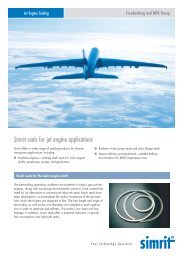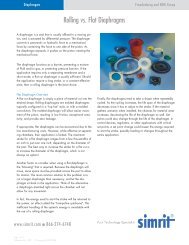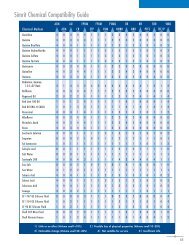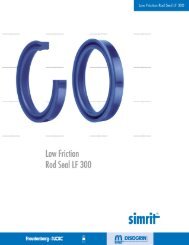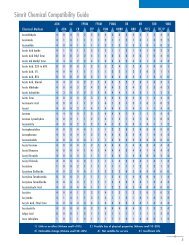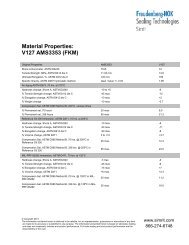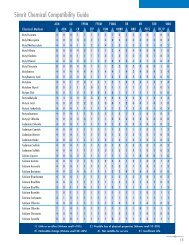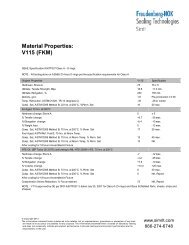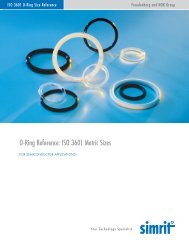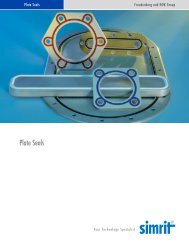Diaphragm Design Manual - Simrit
Diaphragm Design Manual - Simrit
Diaphragm Design Manual - Simrit
You also want an ePaper? Increase the reach of your titles
YUMPU automatically turns print PDFs into web optimized ePapers that Google loves.
Selected <strong>Design</strong> TopicsCommon Causes for Non-Linear Stroking1. Yarn geometry within the fabric.2. Return spring not seated or not flat ground.3. Insufficient bearing support of the piston rod.4. Spring coil diameter too small for piston.5. Piston height too low. Does not support the diaphragm sidewall.6. Convolution width too wide.See page 27Common Causes for Residual Stresses1. Hot creased parts.2. Uneven draw of fabric in preforming or molding.3. Old or nervy compound4. Excessive precure time on coated fabric or compound.5. Excessive post-curing of parts.6. Molded at too high a pressure, or mold overloaded with compound.7. Bad packaging.8. Under cure of the rubber.See page 32The Three Most Common Types of Bead Failures:1. Not enough compression, which can result in flangeleakage.2. Over compression which can cause a cut in thebead or the diaphragm.3. Over compression can cause the bead material toflow back into the diaphragm convolution causingincreased stress and potential premature failure.See page 39Advantages of Tear Drop Beads:1. Provides for a more even draw of the fabric onto thediaphragm. While smoothing out possible wrinkles, italso aids in keeping the fabric in place within the part.2. Provides for a positive location of the part in the trimdie, which controls the concentricity.3. Provides for backpressure in the mold to allowpositive flow of the rubber and flushes out trappedgasses in the bead.See page 40© Copyright FNGP 200925



